Right-Wing Groups Attack American Bar Association’s Proposed Racial Diversity Guidelines
 This coming summer, members of the American Bar Association will vote on new guidelines that would require member law schools to demonstrate they are taking steps to increase the racial diversity of their student bodies and faculties. If they fail to take these steps, the law schools would risk losing their accreditation from the ABA. The new guidelines were proposed after ABA statistics documented an alarming decline in black enrollments at law schools in the United States. This coming summer, members of the American Bar Association will vote on new guidelines that would require member law schools to demonstrate they are taking steps to increase the racial diversity of their student bodies and faculties. If they fail to take these steps, the law schools would risk losing their accreditation from the ABA. The new guidelines were proposed after ABA statistics documented an alarming decline in black enrollments at law schools in the United States.
This past week, three right-wing organizations have asked the U.S. Department of Education to strip the ABA of its accrediting authority if it approves the new guidelines. In letters to the Department of Education, officials at the Center for Equal Opportunity, the National Association of Scholars, and the Center for Individual Rights say that the ABA is using its authority “to coerce law schools into using racial, ethnic, and sex discrimination and preferences in the selection and treatment of students and faculty.”
The letter, from Roger Clegg at the Center for Equal Opportunity, pointed out that the Supreme Court Grutter decision allows racial preferences but does not require them. According to Clegg, the new ABA guidelines will force law schools to use racial preferences.
The letter from Stephen H. Balch, president of the National Association of Scholars, was even more direct. It read, “It is difficult to avoid the interpretation that the ABA is attempting to pressure law schools into breaking the law.”
Cornel West and Tavis Smiley Offer Online Course on Empowerment
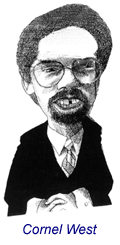 Author and television talk-show host Tavis Smiley has teamed up with Cornel West, the Class of 1943 University Professor of Religion at Princeton University, to launch a new online course entitled, “Covenant Curriculum: A Study of Black Democratic Action.” Author and television talk-show host Tavis Smiley has teamed up with Cornel West, the Class of 1943 University Professor of Religion at Princeton University, to launch a new online course entitled, “Covenant Curriculum: A Study of Black Democratic Action.”
The self-guided course is designed to take 15 weeks to complete. It is designed as a course on the history of American democracy in the context of the struggle for equality by black Americans from slavery through Jim Crow to the present day. Professor West explains the purpose of the project as follows: “What we need is an examination of ourselves, our history and our present that raises the question, ‘What does it take for us to wake up?’ It’s time for everyday people to wake up and take power in the face of elite abusive power.”
There are standard and advanced levels of the course with different reading assignments. Works by W.E.B. Du Bois, Toni Morrison, Michael Eric Dyson, Ida B. Wells, Mark Twain, and many others are on the reading list.
A companion guidebook to the course is also available. It includes essays by 10 scholars on issues such as health, education, and criminal justice.
  |
“In 1975 the maximum Pell Grant award was equivalent to 80 percent of the average costs of attending a public, four-year institution. Today it covers less than 40 percent of those costs. Today students are increasingly forced to borrow larger amounts in order to finance college. This has a particularly strong deterrent effect on students from low-income families. One study found that these students are significantly less willing, by almost 50 percent, to finance college through borrowed money than their economically wealthier counterparts.”
— a March 7, 2006, letter to Senate Budget Committee Chair Judd Gregg, signed by 43 U.S. senators seeking a $450 increase in the maximum Pell Grant award. The maximum Pell Grant award has remained the same for the past five years.
|
Black-White Gender Gap in Enrollments at High-Ranking Universities
Last week JBHE reported that at 23 of the 26 institutions that responded to our recent survey, there were more black women enrolled than black men. But it also is important to note that the gap is more of an issue of race rather than gender. Among whites, women outnumber men at only 11 of the 26 institutions.
In many cases, the racial differences in the gender gap are huge. For example, at Duke University black women make up nearly 63 percent of all African-American enrollments. For whites, women are only 44.8 percent of all white enrollments. This is more than an 18 percentage point difference.
At Johns Hopkins, Columbia, Cornell, the University of Chicago, and Tufts, black women make up more than 60 percent of the total African-American enrollments. But at all these universities white women are outnumbered by white men. At one half of the universities in our survey the percentage of black women enrollments among the African-American student body is more than 10 percentage points higher than the percentage of Caucasian women in the overall white student body.
Racial Controversy at Yale Law School
 Later this month the Yale Law Journal will hold a symposium in New Haven entitled, “The Most Dangerous Branch? Mayors, Governors, Presidents and the Rule of Law: A Symposium on Executive Power.” Papers presented at the symposium will be published in a future edition of the Yale Law Journal. A paper authored by Kiwi Camara, the John M. Olin Fellow in Law and Economics at Stanford University, was accepted as part of the symposium. Later this month the Yale Law Journal will hold a symposium in New Haven entitled, “The Most Dangerous Branch? Mayors, Governors, Presidents and the Rule of Law: A Symposium on Executive Power.” Papers presented at the symposium will be published in a future edition of the Yale Law Journal. A paper authored by Kiwi Camara, the John M. Olin Fellow in Law and Economics at Stanford University, was accepted as part of the symposium.
 Camara, a native of the Philippines, is a legal prodigy. He is often referred to as the “Doogie Howser of the legal profession.” He could read at age 3, skipped high school altogether, and graduated from Hawaii Pacific University with a degree in computer science at age 16. He took as many as 21 credits a semester, earning his bachelor’s degree in two years. Camara then went on to Harvard Law School where in 2002, at the age 19, he became the youngest student ever to graduate. After clerking for an appeals court judge, Camara accepted his fellowship at Stanford. Camara, a native of the Philippines, is a legal prodigy. He is often referred to as the “Doogie Howser of the legal profession.” He could read at age 3, skipped high school altogether, and graduated from Hawaii Pacific University with a degree in computer science at age 16. He took as many as 21 credits a semester, earning his bachelor’s degree in two years. Camara then went on to Harvard Law School where in 2002, at the age 19, he became the youngest student ever to graduate. After clerking for an appeals court judge, Camara accepted his fellowship at Stanford.
After Camara’s article was accepted by the Yale Law Journal this past fall, an anonymous letter to the editorial board related that Camara repeatedly referred to black people as “nigs” or “niggers” in his class notes that he had posted online while at Harvard Law School. Camara subsequently apologized for the remarks.
After Camara’s racial slurs were revealed, the editors of the law journal considered pulling his article from the journal and rescinding their invitation for him to participate in the symposium. But the student editors at the journal concluded that Camara’s article had been accepted solely on its merits. Citing a belief in academic freedom of expression, the editors decided to publish the article.
It remains to be seen if Camara will show up for the symposium scheduled for March 24-26. If he does, it is expected that he will be met by protesters.
African-American Woman Inaugurated as President of Kalamazoo College
 This past Saturday, Eileen Wilson-Oyelaran was inaugurated as the seventeenth president of Kalamazoo College in Michigan. She is the first woman and the first African American to hold the position. This past Saturday, Eileen Wilson-Oyelaran was inaugurated as the seventeenth president of Kalamazoo College in Michigan. She is the first woman and the first African American to hold the position.
Wilson-Oyelaran is a native of Los Angeles. She is a graduate of Pomona College and holds a master’s and doctorate in education from the Claremont Graduate University. After teaching in Nigeria for 14 years, in 1988 she returned to the United States where she taught at North Carolina Wesleyan College, Winston-Salem State University, and Salem College.
Kalamazoo College, founded in 1833, is the oldest institution of higher education in the state. Currently, blacks are 2.4 percent of the 1,200-member student body.
In University of Colorado Case, Jury Decides Yelling “Nigger” During an Assault Does Not Constitute a Hate Crime
Last June a black mechanical engineering student at the University of Colorado in Boulder was accosted by a white man in a van who called him a “nigger.” The van then pulled over and a second occupant apologized for his friend’s remarks. But the man who yelled the slurs got out of the van and punched the black man twice, breaking his jaw. The black student was knocked unconscious. Friends took him to the hospital where a permanent titanium plate was inserted to replace his broken jaw bone.
A white man was convicted on assault charges earlier this month in the case and sentenced to a maximum of 16 years in prison. But the jury decided not to convict the white man of ethnic intimidation, which would have resulted in an additional one to three years in jail. The jury, which had only one black member, concluded that the use of the term “nigger” prior to the attack did not necessarily imply that the attack was motivated by racial hate.
After hearing the verdict, the victim in the case told the Rocky Mountain News, “The fact that he broke my face is more important than that he hurt my feelings.”
Mississippi State University

Executive Director of Extension and Outreach
Mississippi State University invites applications/nominations for the position of Executive Director of Extension and Outreach. The Executive Director provides overall administrative, organizational, and programmatic leadership for the university’s outreach activities through the Mississippi State University - Extension Service, the Industrial Outreach Service, the University Television Center, and Academic Outreach and Continuing Education.
Minimum Qualifications
Demonstrated understanding of the extension and outreach responsibilities of a land-grant institution, including the interrelationships among research, extension, and continuing education; a record of successful and innovative leadership and management experience and management of personnel/budgets; effective communication and interpersonal skills; a commitment to diversity; a record of scholarship; and an earned doctorate from an accredited institution.
Applications
Review of applications will begin on April 1, 2006, and continue until the position is filled. Applicants should submit a letter of interest that discusses qualifications for the position; a curriculum vitae; and the name, telephone number, mailing address, and email address of at least five references. Application must be made on line at https://www.jobs.msstate.edu. Requisition number 1997. For more information, contact Dr. George Hopper at 662-325-2953 (phone); 662-325-0015 (fax); [email protected].
Mississippi State University does not discriminate on the basis of race, color, religion, national origin, sex, sexual orientation or group affiliation, age, disability, or veteran status.
In Memoriam
Gordon Parks (1912-2006)
 Gordon Parks, photographer, novelist, poet, songwriter, painter, and movie director, a true Renaissance man, died in New York this past week. He was 93 years old. Gordon Parks, photographer, novelist, poet, songwriter, painter, and movie director, a true Renaissance man, died in New York this past week. He was 93 years old.
A native of Fort Scott, Kansas, Parks, the youngest of 15 children, spent his formative years in the Minneapolis area. As a young teen he left home and got a job playing piano at a brothel. He later worked as a waiter and a Pullman porter. On one train trip he bought a small camera for $12.50 and soon began doing fashion photography shoots for a chic Minneapolis boutique.
After World War II Parks moved to New York and he began a long career as a magazine photographer, first for Vogue and then for Life magazine where he took on many assignments dealing with the civil rights movement.
Parks published his first novel, The Learning Tree, in 1963. Six years later, Parks produced and directed a movie based on his book. He later directed Shaft and three other feature films.
Parks never completed high school but was awarded more than 40 honorary doctorates from American colleges and universities.
J. Tyson Tildon (1931-2006)
J. Tyson Tildon, the founder of the division of pediatric research at the University of Maryland at Baltimore, died from cancer earlier this month in a Baltimore hospital. He was 74 years old.
Dr. Tildon was a native of Baltimore and in 1954 graduated with a degree in chemistry from Morgan State University, the historically black educational institution in the city. He received a doctorate in biochemistry from Johns Hopkins. His research concentrated on the biochemistry of mental retardation.
He began his academic career at Goucher College in Baltimore in 1967. The next year he joined the faculty at the University of Maryland and remained on staff there until his retirement in 2000.
Holloway Fields Jr. (1927-2006)
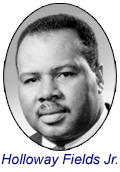 Holloway Fields Jr., the first black student to earn an undergraduate degree at the University of Kentucky, died late last month at his home in Fayetteville, New York. He was 78 years old. Holloway Fields Jr., the first black student to earn an undergraduate degree at the University of Kentucky, died late last month at his home in Fayetteville, New York. He was 78 years old.
Fields grew up across the street from the University of Kentucky campus and in 1945 was valedictorian of his all-black high school. But because of his race, he was not permitted to enroll at the University of Kentucky. He began his studies at the Illinois Institute of Technology. When a court ruling ended racial segregation at the University of Kentucky, he immediately applied and was accepted as a transfer student. He was not allowed to live or eat on campus and could not attend the university’s football or basketball games.
Fields graduated in 1951, with a bachelor’s of science degree in engineering. He was told at the time that he was the first black student to graduate from an accredited engineering school at a university south of the Mason-Dixon Line.
Fields went on to a long career as an engineer with General Electric in Syracuse, New York. He retired in 1991.
Awards
 • Minnie Holmes-McNary, an associate professor of biology at North Carolina A&T State University, received a 2006 Minority-Serving Institution Faculty Scholar Award in Cancer Research from the American Association of Cancer Research. Dr. Holmes-McNary is a graduate of the University of Illinois at Springfield. She holds a Ph.D. in biology from the University of Illinois. • Minnie Holmes-McNary, an associate professor of biology at North Carolina A&T State University, received a 2006 Minority-Serving Institution Faculty Scholar Award in Cancer Research from the American Association of Cancer Research. Dr. Holmes-McNary is a graduate of the University of Illinois at Springfield. She holds a Ph.D. in biology from the University of Illinois.
|
Eight Highly Selective Colleges Plan to Enroll 1,100 Low-Income Community College Transfer Students Over the Next Four Years
 The latest Department of Education figures show that there are 859,000 black students enrolled at two-year community colleges. They make up nearly 45 percent of all black students enrolled in higher education. The latest Department of Education figures show that there are 859,000 black students enrolled at two-year community colleges. They make up nearly 45 percent of all black students enrolled in higher education.
Eight high-ranking colleges and universities recently announced that they have teamed up with the Jack Kent Cooke Foundation in an effort to increase the number of low-income students currently at community colleges who can transfer to selective four-year institutions. The participating institutions are Amherst College, Bucknell University, Cornell University, Mount Holyoke College, the University of California at Berkeley, the University of Michigan, the University of North Carolina at Chapel Hill, and the University of Southern California.
The foundation will award grants totaling $6,780,000 to the eight colleges and universities to help them establish programs to recruit low-income community college students. The eight schools will in turn commit $20.5 million in financial aid to students who transfer from community colleges.
Over the next four years, the goal of the program is to admit 1,100 low-income transfer students from community colleges at these eight institutions.
Stanford University Offers Cash to Prospective Black Graduate Students So They Can Visit Campus
 Stanford University has established a new incentive program to attract black graduate students to its campus. Black and other minority students who are considering Stanford graduate programs are eligible for a $500 stipend that can be used for travel and lodging expenses to visit Stanford. University faculty must recommend minority students who they believe are good candidates for admission to graduate programs in their field. Stanford University has established a new incentive program to attract black graduate students to its campus. Black and other minority students who are considering Stanford graduate programs are eligible for a $500 stipend that can be used for travel and lodging expenses to visit Stanford. University faculty must recommend minority students who they believe are good candidates for admission to graduate programs in their field.
In addition, Stanford will host two diversity weekends in the spring for black and other minority graduate students who have been admitted to graduate programs but have not yet decided to enroll. Once again, faculty members can ask the university to pay the travel expenses of any minority student who wants to attend the diversity weekend.
CalState Takes Black Student Outreach to the Pulpit
 There are approximately 405,000 students enrolled on the 23 campuses of the California State University system. Only 20,000 of these students, or less than 5 percent, are African Americans. There are approximately 405,000 students enrolled on the 23 campuses of the California State University system. Only 20,000 of these students, or less than 5 percent, are African Americans.
In an effort to boost black enrollments, Charles B. Reed, a white man who is chancellor of the system, and the presidents of several CalState campuses took their recruitment message to pulpits of seven black churches in Southern California on a recent Sunday morning. The speakers urged the predominantly black congregations to push their children and grandchildren toward college at an early age. After the services, university officials were available to answer questions and to hand out literature about CalState. The university printed and made available a poster with a year-by-year college planning guide for students beginning in the sixth grade. Postcards were distributed, which students could use to sign up for a mentoring program that would help guide them through the college admissions cycle.
A similar “Super Sunday” outreach program is planned for northern California later this year.
Comparing Black and White Graduation Rates at the Nation’s Highest-Ranked Colleges and Universities
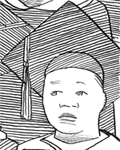 Five of the nation’s highest-ranked colleges and universities actually report a higher graduation rate for black students than for white students. According to the latest statistics from Mount Holyoke College, Pomona College, Smith College, Wellesley College, and Macalester College, a black student on these campuses is more likely to complete the four-year course of study and receive a diploma than is a white student. Five of the nation’s highest-ranked colleges and universities actually report a higher graduation rate for black students than for white students. According to the latest statistics from Mount Holyoke College, Pomona College, Smith College, Wellesley College, and Macalester College, a black student on these campuses is more likely to complete the four-year course of study and receive a diploma than is a white student.
At some institutions the difference in black and white graduation rates is very small. Washington University in St. Louis has a 90 percent graduation rate for both blacks and whites. At Wake Forest University and Wesleyan University, the white student graduation rate is only one percentage point higher than the rate for blacks. At Amherst College, Harvard University, and Oberlin College, the difference is only two percentage points.
But the small gap in black and white graduation rates does not exist at all of our highest-ranked institutions. In fact, 16 of the 56 colleges in a recent JBHE analysis have a black graduation rate that is 10 percentage points or more below the graduation rate for white students. There are four high-ranking colleges and universities with at least a 20 percentage point gap. They are Colby College, Carleton College, Bates College, and the University of Michigan.
MIT Increases Financial Aid for Low-Income Students
 According to the latest data compiled by JBHE, in 2003 there were 591 students at the Massachusetts Institute of Technology who received a federal Pell Grant. These low-income students made up 14.3 percent of the student body at MIT. That year, MIT had the sixth-highest level of low-income students among the nation’s 25 top-ranked universities. According to the latest data compiled by JBHE, in 2003 there were 591 students at the Massachusetts Institute of Technology who received a federal Pell Grant. These low-income students made up 14.3 percent of the student body at MIT. That year, MIT had the sixth-highest level of low-income students among the nation’s 25 top-ranked universities.
The typical student at MIT graduates with an average debt of nearly $20,000. Now, in an effort to keep pace with Harvard, Princeton, the University of Virginia, and several other high-ranking universities, MIT has taken steps to reduce the debt load of low-income students. Beginning this coming fall, the university will match the government’s Pell Grant award with an MIT grant for all students who receive Pell Grants. As a result, low-income students at MIT will be able to reduce their level of borrowing or reduce the hours they must work to offset the cost of their college education.
Black Men at Arizona State Look to Increase Their Numbers
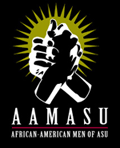 Black men make up less than 2 percent of all students at Arizona State University. But those black men who are students are taking steps to increase their numbers. Black men make up less than 2 percent of all students at Arizona State University. But those black men who are students are taking steps to increase their numbers.
The organization African-American Men of ASU has started a mentoring program for black male high school students in communities surrounding the ASU campus. Black males with a high school grade point average of 2.75 or higher are eligible for the program. Students accepted in the program participate in reading groups, community service projects, college-planning workshops, standardized test coaching classes, and social activities. ASU students act as role models and mentors for the black male high school students with the hope that the experience will prompt many of these young blacks to apply to Arizona State.
  |
24,317 The number of two-year associate’s degrees awarded to black men in the United States in the 2003-04 academic year.
52,605 The number of two-year associate’s degrees awarded to black women in the United States in the 2003-04 academic year.
source: U.S. Bureau of the Census
|
Leffall Autobiography Becomes Publisher’s All-Time Best Seller
 The autobiography of LaSalle D. Leffall Jr., entitled No Boundaries: A Cancer Surgeon’s Odyssey, has now become the all-time leading best seller at Howard University Press. The book, published last September, tells of Leffall’s struggle to succeed in a white man’s world and of his career-long battle in the fight against cancer. In addition to a long career at the Howard University School of Medicine, Leffall was the first African-American president of the American College of Surgeons and the American Cancer Society. He currently serves as chair of the Susan G. Komen Breast Cancer Foundation. The autobiography of LaSalle D. Leffall Jr., entitled No Boundaries: A Cancer Surgeon’s Odyssey, has now become the all-time leading best seller at Howard University Press. The book, published last September, tells of Leffall’s struggle to succeed in a white man’s world and of his career-long battle in the fight against cancer. In addition to a long career at the Howard University School of Medicine, Leffall was the first African-American president of the American College of Surgeons and the American Cancer Society. He currently serves as chair of the Susan G. Komen Breast Cancer Foundation.
Admissions and Race: The Battle Continues in Washington State
 Since 1998 the University of Washington has been prohibited by state law from using race in its admissions decisions. As a result, black enrollments remain at very low levels. Blacks are less than 3 percent of the total enrollments at the flagship campus in Seattle, despite the fact that the Seattle K-12 public school system is now 22 percent black. Since 1998 the University of Washington has been prohibited by state law from using race in its admissions decisions. As a result, black enrollments remain at very low levels. Blacks are less than 3 percent of the total enrollments at the flagship campus in Seattle, despite the fact that the Seattle K-12 public school system is now 22 percent black.
This year the university established what it calls its “holistic” admissions policy. Admissions officials did away with an automatic system which ranked students solely on grades and test scores. Now admissions officers read every application and take into account factors such as leadership potential and whether the student has overcome significant obstacles in efforts to come to college. The university allocated an additional $200,000 to its admissions budget and hired 20 graduate students part-time to read applications.
This past week the university reported that the number of black applicants to the university is up 16 percent from a year ago. Overall applications increased by just 4 percent.
But political activist Tim Eyman, who sponsored the initiative that banned race-sensitive admissions in Washington State, believes the university is using the holistic policy to circumvent the ban on affirmative action. He has filed a new initiative that would bar admissions officers from knowing the race, gender, and even the name of applicants. Under his proposal, each applicant would be assigned a number and all references to race and gender would be removed from personal information on a student’s application.
Eyman has until this July to collect enough signatures to place the initiative on the November ballot.
Florida A&M Holds Official Opening of Its New Law School Campus
Earlier this month, the historically black Florida A&M University held the ribbon-cutting ceremony for the new campus of its law school in downtown Orlando. The new, $30 million building, adjacent to the federal courthouse, has a three-story atrium and 160,000 square feet of space. The building includes a mock trial courtroom and a 300,000-volume law library.
Florida A&M operated a racially segregated law school from 1949 to 1968, but white lawmakers closed the school believing that blacks had sufficient opportunities for admission at other state-operated law schools in Florida. But in order to increase the number of black lawyers in the state, the legislature authorized the reopening of the FAMU law school. The revived law school opened its doors in 2002 and graduated its first class last spring. While its new campus was under construction, the law school has been operating out of rented space in a downtown office building.
There are currently about 400 students enrolled at the law school and less than one half of the student body is black. The law school hopes to double its enrollment over the next three years.
Fire Destroys the Home of the Founder of Howard University
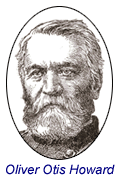 An eighteenth-century farmhouse in Leeds, Maine, was recently destroyed by fire. The house was the home of Oliver Otis Howard, the Civil War general who in 1868 founded Howard University in Washington, D.C. A staunch abolitionist, Howard was a graduate of Bowdoin College and the U.S. Military Academy. He later served on the faculty at West Point. After the Civil War he was named the head of the Freeman’s Bureau. He later fought in the Indian Wars and remained on active duty in the Army until the age of 64. Howard died in 1909. An eighteenth-century farmhouse in Leeds, Maine, was recently destroyed by fire. The house was the home of Oliver Otis Howard, the Civil War general who in 1868 founded Howard University in Washington, D.C. A staunch abolitionist, Howard was a graduate of Bowdoin College and the U.S. Military Academy. He later served on the faculty at West Point. After the Civil War he was named the head of the Freeman’s Bureau. He later fought in the Indian Wars and remained on active duty in the Army until the age of 64. Howard died in 1909.
Appointments
 • John E. Maupin Jr. was appointed president of the Morehouse School of Medicine in Atlanta. Since 1994, Maupin, who is a dentist, has been president of Meharry Medical College in Nashville, Tennessee. He previously served as an executive vice president at Morehouse. • John E. Maupin Jr. was appointed president of the Morehouse School of Medicine in Atlanta. Since 1994, Maupin, who is a dentist, has been president of Meharry Medical College in Nashville, Tennessee. He previously served as an executive vice president at Morehouse.
Dr. Maupin is a graduate of San Jose State University. He received his doctorate in dental science at Meharry in 1972. He also holds an MBA from Loyola College in Baltimore. He has served as president of the National Dental Association.
 • Jonathan Poullard was named dean of students at the University of California at Berkeley. He was associate vice president for student affairs and dean of students at California State University San Marcos. Poullard is a graduate of Jackson State University in Mississippi and holds a master’s degree in human development and family studies from Penn State. • Jonathan Poullard was named dean of students at the University of California at Berkeley. He was associate vice president for student affairs and dean of students at California State University San Marcos. Poullard is a graduate of Jackson State University in Mississippi and holds a master’s degree in human development and family studies from Penn State.
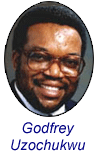 • Godfrey Uzochukwu, director of the Interdisciplinary Waste Management Institute at North Carolina A&T State University in Greensboro, was named to the North Carolina Commission on Global Climate Change. Dr. Uzochukwu holds a bachelor’s and master’s degree from Oklahoma State University. Specializing in soil research, he earned his Ph.D. at the University of Nebraska. • Godfrey Uzochukwu, director of the Interdisciplinary Waste Management Institute at North Carolina A&T State University in Greensboro, was named to the North Carolina Commission on Global Climate Change. Dr. Uzochukwu holds a bachelor’s and master’s degree from Oklahoma State University. Specializing in soil research, he earned his Ph.D. at the University of Nebraska.
|

